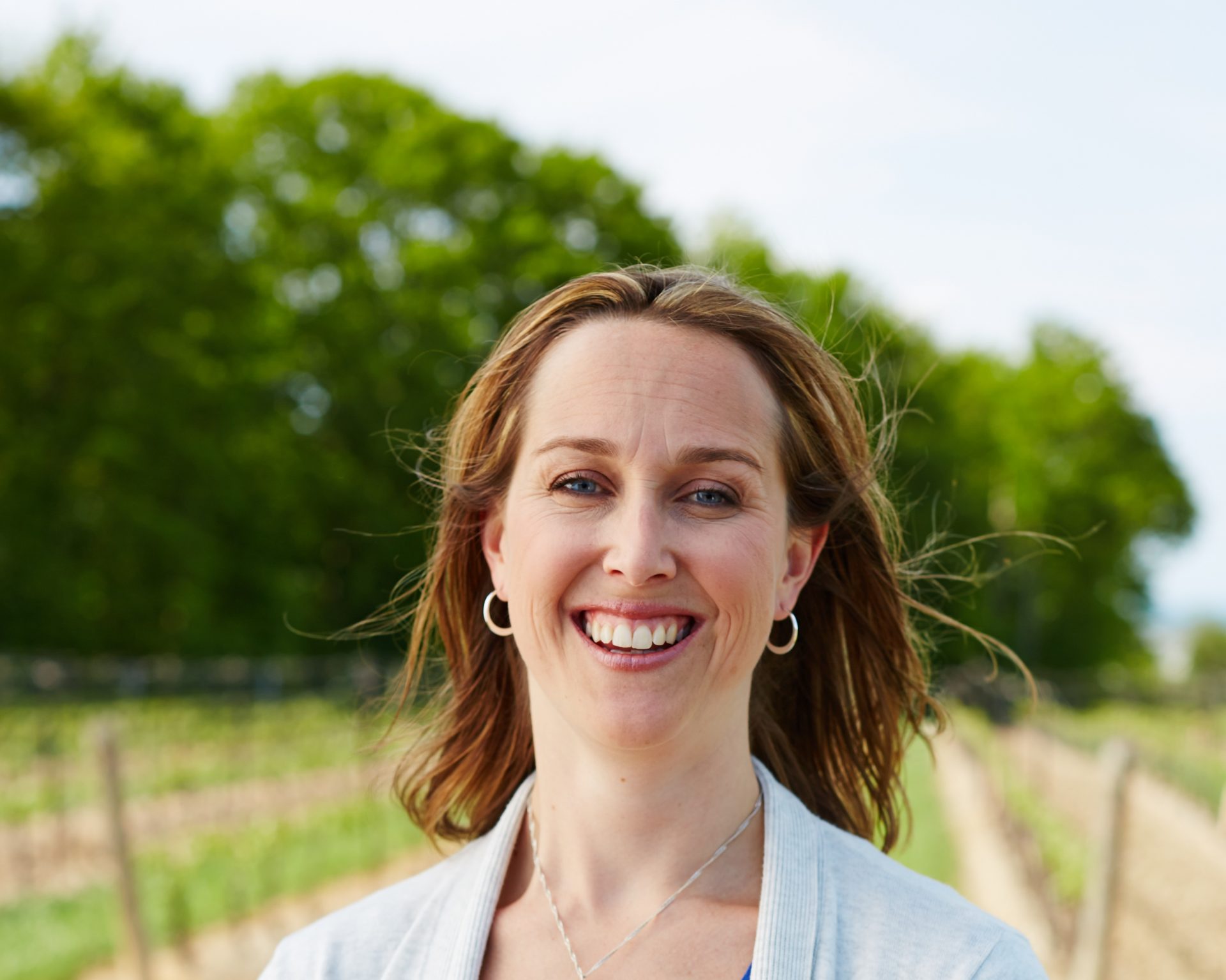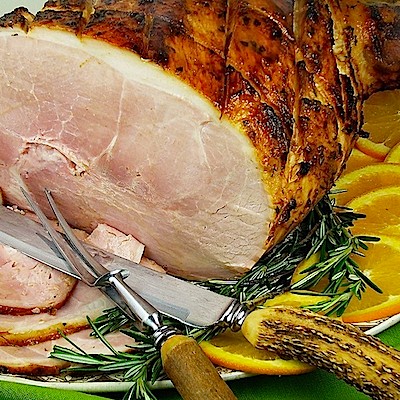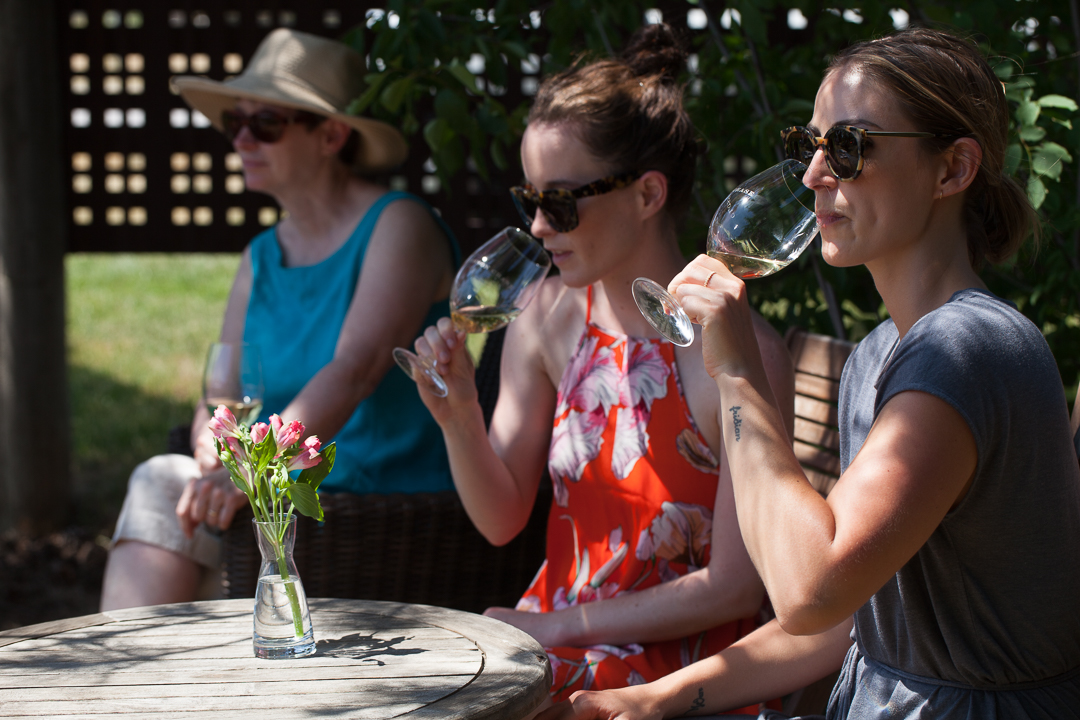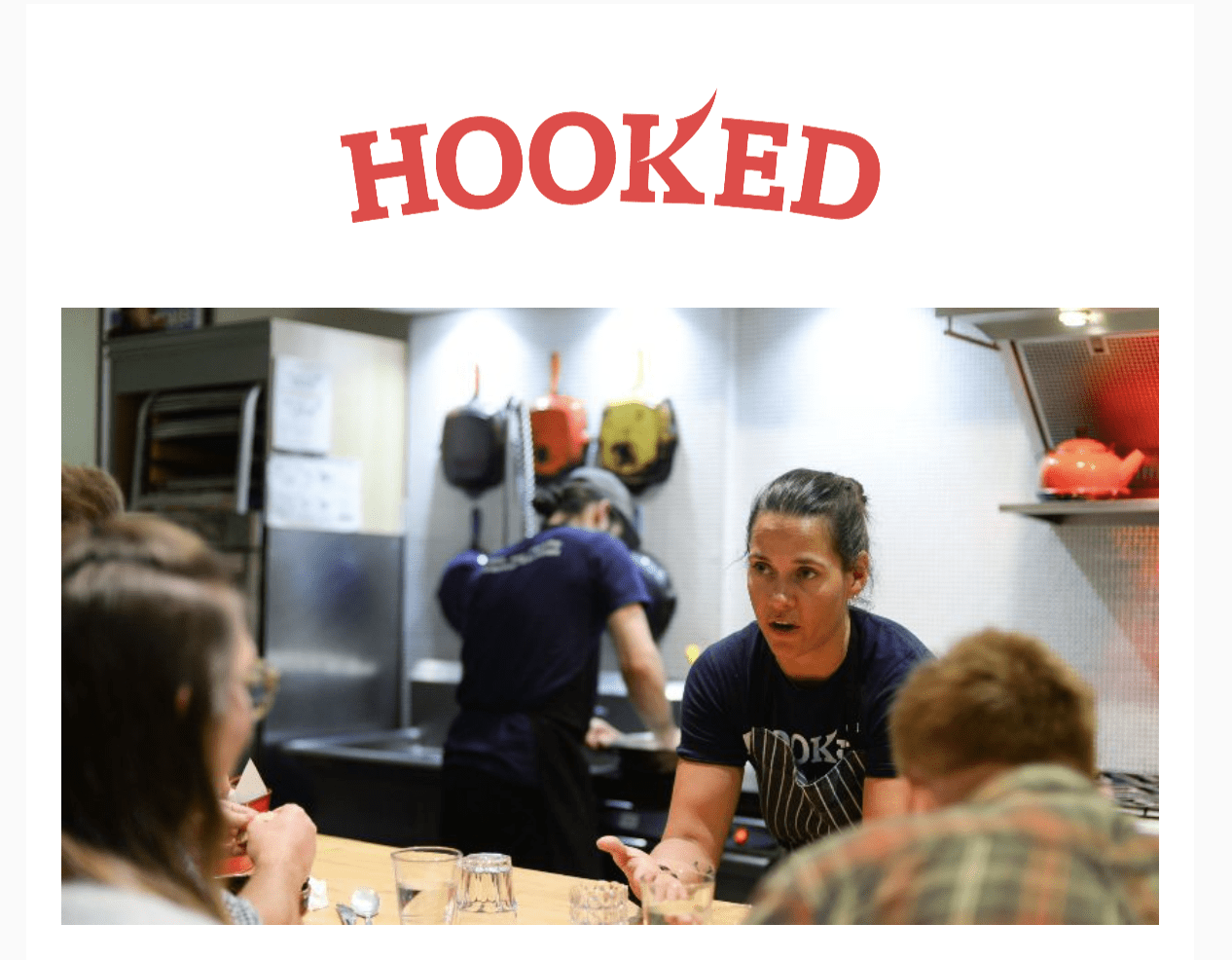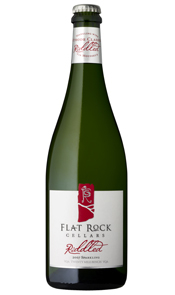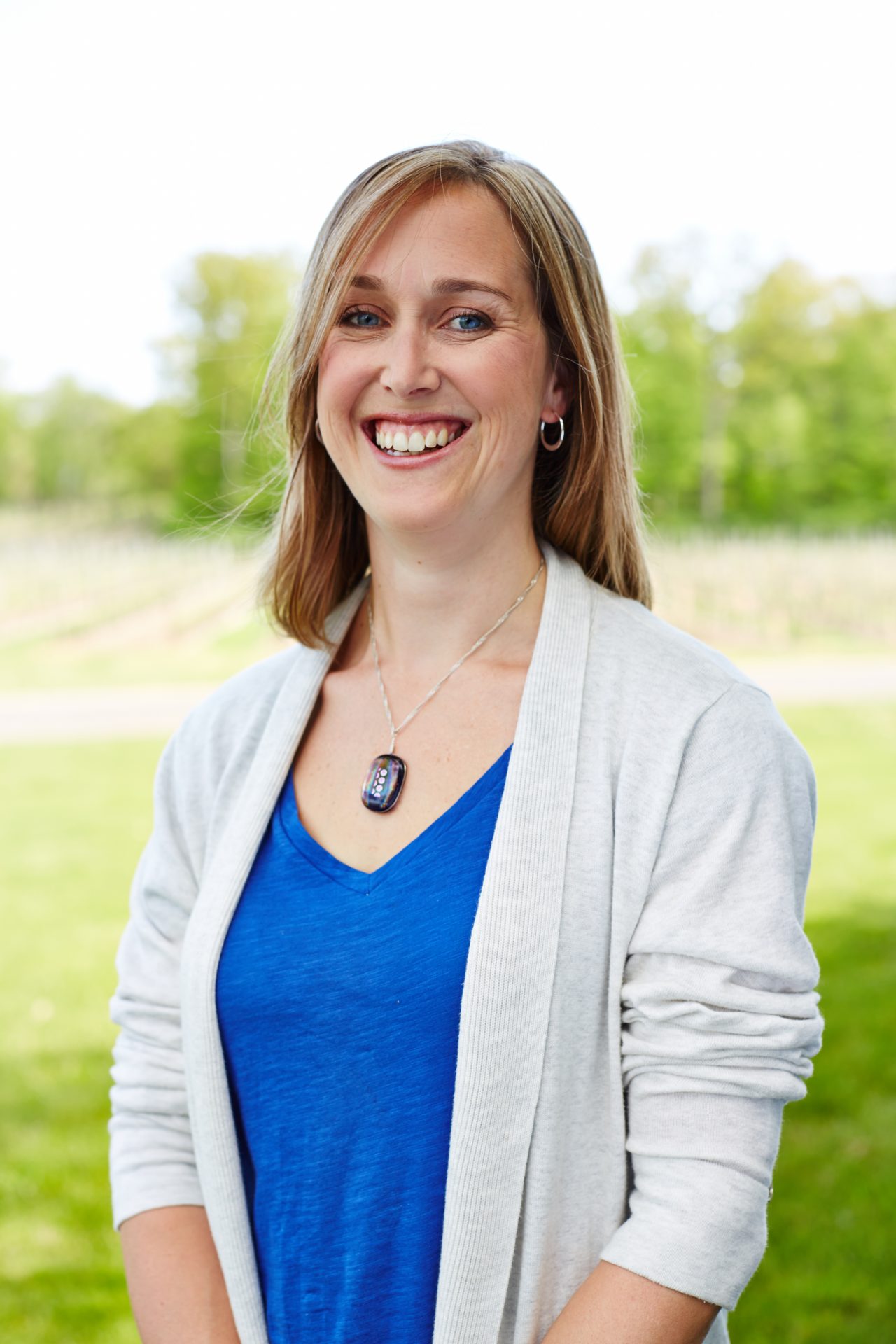
This week we are proud to present an in-depth interview with Thirty Bench Winemaker Emma Garner.
Good Food Revolution: Hello Emma, great to speak with you again. How long have you been working at Thirty Bench for now, and what was your education and experience before taking the reigns there?
Emma Garner: I took over the winemaking role at Thirty Bench in 2009. Prior to that, I attended Brock’s Oenology and Viticulture program which allowed me to not only study at Brock but also at Lincoln university in New Zealand. I travelled fairly extensively to many wine regions and fell more in love with wine all the time. In order to achieve your BSc in Oenology you are required to complete work placements in various aspects of the industry.
My first was in the retail store at Inniskillin (where I happened to meet my husband – however, that’s another story!). From the retail store, I moved to the cellars to complete my first crush (2001). The next round of placements that I completed were R+D winemaking at Hillebrand under the supervision of J-L Groux.
I spent a couple of fascinating vintages with him until he moved to Stratus in 2004. From there, I secured a winemaking role within the company and made many different styles of wine. In 2007, I was asked to cover a maternity leave position at Thirty Bench – I jumped at the chance! From that point on, I worked very closely with the wines from Thirty Bench and have loved every minute of it.
GFR: In all of those years at Thirty Bench what kind of changes have you seen and what are the most important things that you, as a Winemaker, have learned?
EG: I think the biggest change has been the understanding of the vineyard. Having had the opportunity to work with the same piece of land for so many vintages I have a good understanding of how it reacts. Where the troublesome pieces of each block are located, where our highest quality fruit tends to come from, which section needs the most attention. It’s these things that allow me to really understand the fruit that develops each year and how I can optimize it’s expression and representation year in and year out.
I have learned that you need to listen to the vineyard and realize that its what is controlling what fruit gets harvested – not me. I can help guide it and try to give it the most attention possible but at the end of the day, it determines the harvest. I must say winemaking is a very humbling profession Just when you think you have it all figured out, you realize how much more there is to learn.
GFR: How would you describe the current winemaking philosophy at Thirty Bench and how does that compare to what has gone before, even before Peller purchased the property?
EG: To my understanding, there were two winemaking styles at TB before APL purchased them in 2005. Dr. Muckle focused on Riesling and unoaked Chardonnay, Yorgos focused on Reds and barrel aged Chardonnays.
However, in 2005 all of the varieties were made by the same winemaker. The current philosophy that I maintain would be to allow the vineyard to express itself. I have a fairly minimalistic winemaking style (however, it can be argued that I do intervene because I don’t always allow for wild ferments to take place – there are some yeasts that really help the vineyard shine).
The Thirty Bench property is so special and I am very fortunate to be able to make the wine from that piece of land. I love being able to see the similarities within each of our blocks from year to year despite what the vintage has been like (i.e. hot vs. cold). It’s the unique ‘terroir’ that I don’t want to get in the way of.
GFR: Being part of the larger Peller group, how do you maintain such an individual house personality at Thirty Bench? How much autonomy do you have there?
EG: I have a tremendous amount of autonomy for how the wines are made. When APL purchased Thirty Bench in 2005 I am sure there were some Thirty Bench fans that were nervous that this was another case of a large company purchasing a small winery and everything that made it special would be lost. It actually had quite the opposite effect.
Thirty Bench was in need of some upgrades and the larger company had the resources to make them happen. We switched up the layout of the cellars and built a beautiful tasting room which looks out onto the Riesling blocks, had some fantastic equipment upgrades to really promote quality winemaking and were able to make some improvements in the vineyard (i.e. trellis upgrades, drainage etc.).
I am fortunate because I get to work with the fruit from an ultra premium location on the Beamsville Bench, however, can utilize some of the company’s resources to make improvements to quality each vintage (i.e. attend Riesling conferences, interacting with fellow winemakers in the company to bounce ideas off them for blends/processing etc.). I really feel that I have the best of both worlds.
GFR: Now Thirty Bench have gained much praise for their three individual site Riesling releases. Would you mind speaking to the individuality of those specific sites for our readers?
EG: Absolutely. The Riesling portfolio at TB is very close to my heart.
I love Riesling as I feel it is truly a grape that demonstrates the terroir in which it is grown because of it’s purity. In 2005 we subdivided the pre-existing Riesling block into three sections (Triangle Vineyard, Steel Post, and Wood post).
The main rationalization at this point was determined by the years in which the grapes were planted (1981/1982, 1983 and 1984 respectively). However, it turns out that the differences that lay within these blocks were much greater. Brock University and the University of Guelph were working on a project involving wineries with small lot productions and were trying to determine what (if anything) makes those wines different.
We worked with the universities for 3 vintages and made some exciting discoveries. Turns out there is a tremendous variation within the soil profile in respect to how each portion of the vineyard retains water. The less water the soil holds, the higher the water stress on the vine and the higher the amount of terpenes (aromatic compounds) develop in the berries.
We found the Triangle block to have the highest amount of water stress and subsequent terpene development. This block tends to be our most award winning block which we found quite interesting – turns out we validated the universities’ studies and they helped to give our small lot portfolio some integrity and definition.
GFR: And I believe that you have exciting plans for a new block of Old Vine Riesling? How does that work???!
EG: It does sound quite contradictory when you put it that way! We had a small Bordeaux planting on the south side of the property. Unfortunately it has not been in the best of health and has not been producing the quality of grapes that we require. After some long discussions, we decided to pull out the vines and replant them with Riesling.
We have been working on a grafting project with Vinetech where they collect budwood from the oldest vines within our pre-existing blocks and graft them onto rootstock. After a year in the nursery the new vines get replanted back into the block from which the budwood was taken. It helps to maintain the integrity of the block and therefore our small lot individuality.
We have extended the project to include the new planting. It will contain new vines from each of the small lots so it is a true representation of the entire Riesling vineyard that is currently planted at TB. This process lets us continue to craft our Thirty Bench wines from the same original clone, with new healthy vines, without losing the age and characteristics of the ‘experienced’ vine.
GFR: Thirty Bench’s legacy is very much rooted in the calibre of your stellar Rieslings, but I have been told that you have been doing some serious research into both Pinot Noir and Chardonnay? Where is this fruit coming from and what makes it so special in your mind?
EG: All of the fruit comes from the Thirty Bench vineyard. The plantings are not as old as the Riesling (both Pinot Noir (3 acres) and Chardonnay (approx. 4.5 acres) were planted in 2000) and have really come into their own in the last few vintages. It’s no secret that you can grow incredible Pinots and Chardonnays on the bench and now that our vines are more mature we are able to get into that game as well.
We have two different Chardonnay clones (95 and 96) which are a lot of fun to work with because it gives me some blending options as they all get harvested separately and fermented separately in small batches. Playing around with different yeast strains and coopers are all apart of the excitement of winemaking.
By shifting some of my focus to Chard and Pinot I am able to work more with these variables. I am planning on attending a Pinot conference this year on the West coast and discuss these varietals with my fellow bench winemakers quite frequently so the knowledge building has begun.
GFR: I often think about the extreme challenges that can face both Growers and Winemakers when it comes to the production of Biodynamic and Organic wines in Ontario. I’d love to hear your thoughts on this as I am aware that you have a fair amount of experience now? It’s difficult to practise true non-interventionist winemaking here is it not?
EG: We are not certified organic or biodynamic at Thirty Bench. We dabble with a couple of blocks. Our main focus and effort has been put into the Cab Franc block at the most northern part of our vineyard. There are some neighbouring vineyards that have decide to go organic and in an attempt to help them achieve this (and see how it affects our production) we have switched the management of the Cab Franc to being organic as well.
It is something that I am very interested in as we know that we need to treat the earth with respect if we want it to continue to be productive so I was excited to try this new venture. Its amazing how well the block has responded. The vines look healthier and the soil profile has also benefited. We did not use a tremendous amount of chemical sprays in past years so making the switch was not that difficult (a lot of the time we were using sprays that are a part of an organically run vineyard).
We also have an integrated pest management approach where we don’t blindly follow a spray schedule – if the precursors or conditions are right for disease to become active, that is when we start to protect the vineyard – not just relying on a scheduled spraying approach.
It can be a challenge due to high humidity rates and rain in some years, however, if your vineyard is healthy going into those situations it will be better equipped to deal with the elements. Also, at TB, the vineyard is sloped which really helps with air and water drainage giving us naturally low disease pressure which is a definite bonus.
GFR: So after that brutal Winter we just came through, what are your hopes and dreads for the 2014 vintage? And looking beyond buds, did you experience much winterkill? And how does one go about dealing with such catastrophic damage?
EG: It is tough to say at this point. We have had some blocks that look like they were affected more severely than the others – it was very varietal dependent. Our Riesling bud counts look very strong which is encouraging.
We have tried a few different pruning techniques to help increase the number of buds that we are leaving in hopes of getting a crop (i.e. spur pruning vs conventional pruning). To be honest, we won’t really know how severe the damage is until mid summer.
The vines may push buds and look fine and then collapse later on in the season due to trunk damage. As with any year, we don’t know what we will end up with until the day we harvest. I am remaining optimistic at this point and am confident I won’t be bored in the fall!
GFR: It’s a clichéd question, but I do always enjoy the answers… What is your favourite varietal to work with? And why?
EG: That is a bit of a difficult question as I receive enjoyment from each varietal I work with (I feel like it is trying to chose your favourite child!). However, I would have to say Riesling. It is such an elegant variety and truly represents where it is grown. It bosses you around and tells you what it needs, you just need to listen.
GFR: Thank you so much for your time Emma… we very much look forward to tasting your new wines in the coming weeks.
EG: Thanks for giving me the opportunity to discuss something that I have a lot of passion about. Come down to the winery and taste some of the new releases – they are sure to impress!
…

Edinburgh-born/Toronto-based Sommelier, consultant, writer, judge, and educator Jamie Drummond is the Director of Programs/Editor of Good Food Revolution… And he’s most impressed with Emma’s answers!

